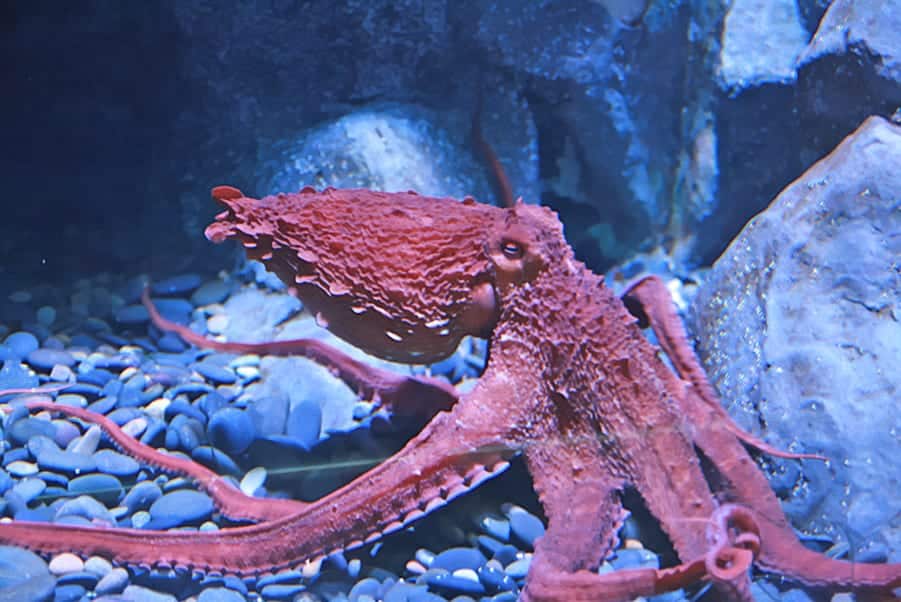These octopi have a radial span of up to 6 metres (20 feet), and their arms grow up to 32 feet long. Despite the fact that the Giant Pacific Octopus will actually eat some sharks, they aren’t scarier. However, i’d much rather not be trapped, and then slowly gnawed on by these creatures. The Giant Pacific Octopus has some of the scariest features that spiders do: Such as eight arms, the tendency to trap their prey and eat them slowly, and a downright scary appearance (deeply ridged skin, many arms).
The Giant Pacific Octopus travels by crawling along the ocean floor with the assistance of its eight arms (it uses these as arms, hands, and legs), and breathes by pulling water into its mantle and over gills/lamella. The water can then be expelled rapidly through the siphon to achieve jet propulsion (this is how an octopus splits when faced with danger) briefly carrying it up to 25 mph. It typically preys on shrimp, clams, lobsters, and fish.
These highly intelligent invertebrate (boneless) creatures are capable of squeezing through any little space larger than their beaks.

Other interesting characteristics:
- These creatures have copper-based blue blood;
- They can live in very cold water due to RNA editing;
The males fertilize the females by inserting spermatophores using the hectocotylus into the female’s mantle. Then the females lay a whopping 120,000 to 400,000 eggs which are intensely cared for by females (they continuously blow water over the eggs and remove algae, etc), and then their mothers die shortly after hatching. These creatures hatch after six months and prowl the ocean for an average of 3-5 years (starting from the egg) before they die.
Despite the large number of eggs, they have a poor survival rate. This is partly due to the fact that the rice-grain-sized hatchlings rise to the ocean surface where they are eaten by birds.
Genus: Enteroctopus, a member of the Octopodidae family.




